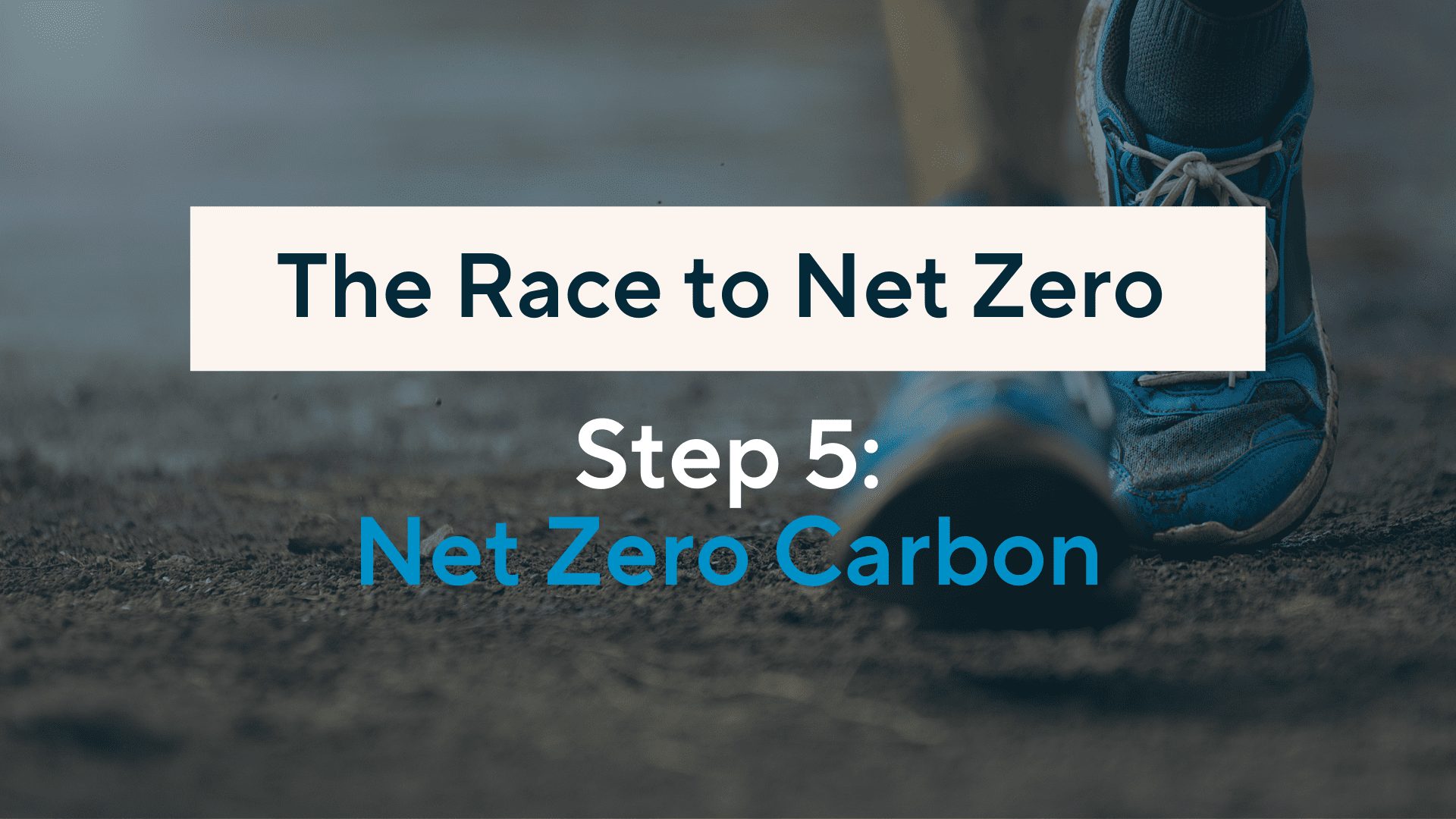If you were running a marathon, you would need plenty of time to prepare. The same applies in the Race to Net Zero. By embarking on this journey to achieve Net Zero Carbon for your organisation a fully planned race training programme is needed. Over the last few weeks Eight Versa and Natural Carbon Solutions have provided this guide to help you get ahead and achieve key climate targets. Explore the first four stages here.
Net Zero: What Does It Mean?
As alarm over the climate crisis steadily grows, Net Zero Carbon has become increasingly relevant in today’s world.
Following recommendations from the Committee on Climate Change, the UK has set a target of Net Zero carbon by 2050. The government has introduced legislation which requires businesses and organisations to reduce their carbon footprints.
In basic terms, Net Zero means that you are not adding any further emissions into the environment. Net Zero is achieved by removing GHG emissions through methods such as offsetting and sequestration to compensate for the emissions you produce elsewhere. Net Zero and Carbon Neutral are often incorrectly used interchangeably. The defining difference between the two is that Net Zero encompasses Scope 3 as well as Scopes 1 and 2. As a result, Net Zero is a more challenging and complex step than Carbon Neutral.
International Context: The Paris Agreement
Scientific research indicates that carbon dioxide is a major culprit in global warming. Climate change is directly correlated with carbon dioxide emissions into the atmosphere. In order to combat Climate Change, it is imperative that carbon emissions are reduced to Net Zero.
The Paris Agreement is the most renowned article in relation to Net Zero Carbon. Signed by 192 countries, the Agreement pledges to reduce GHG emissions in accordance with the need to limit global warming to 1.5 degrees Celsius. This ambitious science-based target necessitates the push to Net Zero by 2050.
Scope 3: The Value Chain
Achieving Net Zero requires eliminating your emissions throughout the entire value chain, including all suppliers and customers. There are various approaches to reducing GHG emissions in your value chain.
For instance, you can select Carbon Neutral suppliers, or companies with Environmental Product Declarations (EPD) for their products to confirm a low carbon footprint. An EPD is a technical document outlining a product’s environmental performance or impact. EPDs are useful tools when actioning a Net Zero strategy as they help you accurately identify sources of carbon emissions, and the amount of these emissions. They are particularly useful in the construction industry to gauge environmental impacts of various materials. Having this data is vital to setting achievable Net Zero goals and reducing carbon emissions. However, to date these declarations cover only a tiny fraction of the market.
Where possible staying local is also an effective option to reduce carbon emissions from transportation. In fact, the transport sector is one of the biggest contributors to GHG emissions, with aviation contributing 1.7% of global emissions and road transport contributing 10.5%.
Changing the materials used in your value chain can be an effective means to reduce your carbon footprint. Switching to materials with higher recycled content and lower carbon emissions is one example. Moreover, end of life treatment can also be a major source of carbon emissions in your supply chain, which can be significantly reduced by selecting materials that are more easily processed and have higher potential for being ‘circular’.
Carbon Credits: Removal
As mentioned in Step 4: Carbon Neutral, you will have achieved this status by measuring, reducing and offsetting your emissions via avoidance offsetting schemes. However, to achieve Net Zero Carbon you will need to also invest in removal offsets (not avoidance offsets) that pull carbon out of the atmosphere. Nature-based removal offsetting schemes such as afforestation, agroforestry and the recovery of degraded soil are long-term investments that successfully sequester carbon.
There are also technology-based schemes such as carbon capture and sequestration systems being trialled. This is an innovative new form of removal offsetting that can help concentrate CO2 and store it underground in geologic formations.
As many organisations have started to set their long-term targets of reaching Net Zero by 2030, removal offsetting is still adolescent in its adoption. Yet those who are well on their way to achieving Carbon Neutral, are already planning the next step on where and how to implement this type of offsetting as part of their complete sustainability portfolio. You can be confident that your full portfolio is robust, credible and long-lasting by following the offsetting criteria outlined in Step 4: Carbon Neutral and ensuring that your credits have used reputable verification protocols. And when partnering with consultants who adhere to the highest global standards such as ISO 14067, PAS 2060, SBTi and the GHG Protocol, you can rest assured that you’ll be reliably supported each step of the way through your Race to Net Zero.
A Proactive Stance: Be Climate Positive
With all the time and energy you have invested in reaching Net Zero, you may want to inspire others and take the next step to becoming Climate Positive. This is the final and most ambitious stage of the race, which we discuss in our final article of this series.





